I’m always striving to make photographs that convey a mood. I want to do more than show what a place looks like; I want to capture what it feels like to be there at that particular moment.
It seems easier to convey a mood when photographing big landscape scenes during interesting weather. Just describing any kind of weather suggests a mood: sunny, cloudy, gray, overcast, rainy, foggy, misty, snowy, windy, calm – and so on. Combining weather with a compelling landscape almost automatically creates a mood.
But I think it’s also possible to convey a mood when photographing smaller, more intimate scenes. I made the image at the top of this post last month in Yosemite Valley. I had actually photographed this maple earlier on the same day, while it was still in the shade. Later in the morning Claudia and I were driving by and I saw that the sun was backlighting the tree, with the background in shade. I calmly asked Claudia to pull over (well perhaps not so calmly), grabbed my camera, ran back, found my camera position, set up, composed, focused, set my aperture and shutter speed, adjusted my polarizer, and clicked the shutter just as the tree was starting to slip into the shade again.
This ended up being one of my favorite images from this autumn, because to me it conveys a mood. It’s hard to describe exactly what that mood is in words; the photograph does it better. But there’s something about the way that one, small, bright tree stands out among other larger, darker, dead-looking trees (they’re not dead, but their bases have been burned) that tells a story. Light in the darkness? Hope amid despair? I don’t know, but somehow this little tree spoke to me. It helps that the maple also has a nice, curving gesture, making it look, perhaps, as if it’s reaching toward the light.
The next photo actually has a similar composition to the one above: a prominent tree just right of center, flanked by larger, taller trunks. A focal point surrounded by repeating vertical lines. But the mood is different. It’s softer and more ethereal. It tells a story about something delicate amid tougher, sturdier companions:
Of course I got lucky with the fog, which adds the weather element that’s so helpful for conveying mood. You don’t often get to show weather in such small scenes. I almost feel like it’s cheating to use that photo as an example of mood with an intimate landscape!
Here’s another dogwood photograph, with a different mood, taken on a plain-old sunny day. While it doesn’t show weather, it does have interesting light and color. Late-day sunlight was striking trees on the opposite bank of the river, creating gold reflections in the water. This is perhaps a “prettier” photograph than the first two, but the subject and color palette make it feel bright, cheerful, and delicate. At least to me:
The next image was photographed in the shade, which is about the most ordinary light there is. But even though this is the smallest scene included here, I think the ferns surrounding the little waterfall convey a feeling of place – a dank, lush, forest:
Although the next photograph includes lots of sky, and even the sun, to me it feels intimate. You’re inside a forest, surrounded by trees, not outside looking in. I tried to use the sun, complementary colors, and converging lines to convey the feeling of a bright autumn day:
Many intimate landscape images are more about design and color than mood. They attempt to show us something interesting and beautiful that we’ve never seen before, or seen in that way before. A visual surprise. And I love photographs like that when they’re done well.
But I hope these examples show that it’s also sometimes possible for an intimate landscape photograph to convey a mood or feeling. As with bigger scenes, it helps to have some interesting weather, like snow or fog. But mainly it’s about finding situations where the subject and light work together to tell a story, and suggest what it feels like to be in a particular place at a particular time.
— Michael Frye
Related Posts: Light and Mood With Intimate Landscapes; Intimate Landscapes with Wide-Angle Lenses
Michael Frye is a professional photographer specializing in landscapes and nature. He is the author or principal photographer of The Photographer’s Guide to Yosemite, Yosemite Meditations, Yosemite Meditations for Women, Yosemite Meditations for Adventurers, and Digital Landscape Photography: In the Footsteps of Ansel Adams and the Great Masters. He has also written three eBooks: Light & Land: Landscapes in the Digital Darkroom, Exposure for Outdoor Photography, and Landscapes in Lightroom: The Essential Step-by-Step Guide. Michael has written numerous magazine articles on the art and technique of photography, and his images have been published in over thirty countries around the world. Michael has lived either in or near Yosemite National Park since 1983, currently residing just outside the park in Mariposa, California.

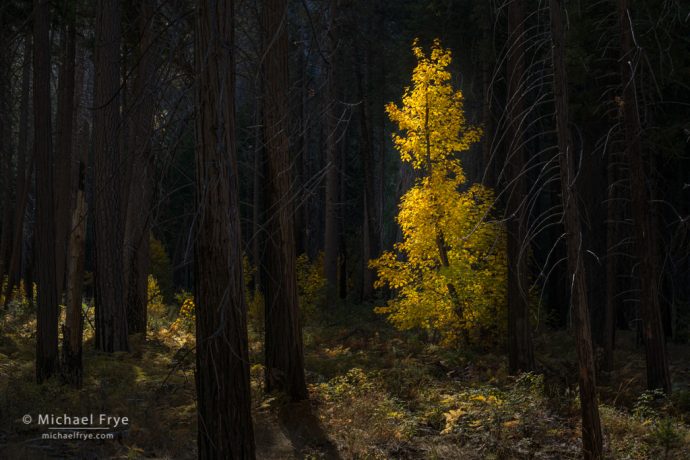
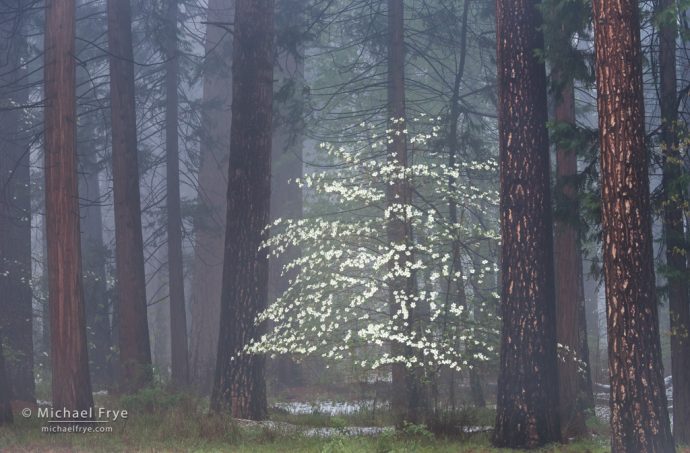
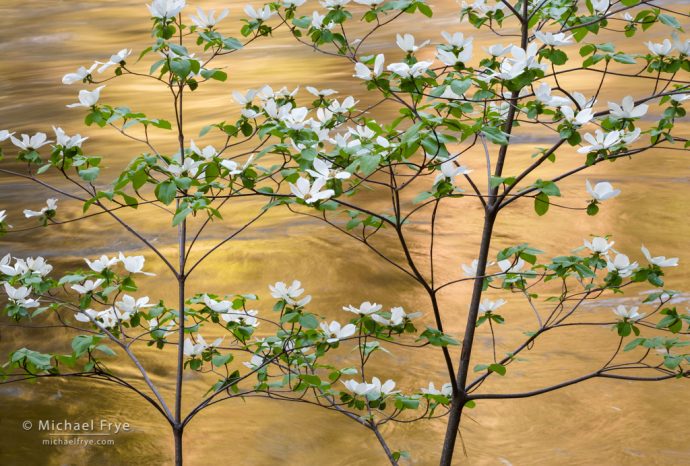
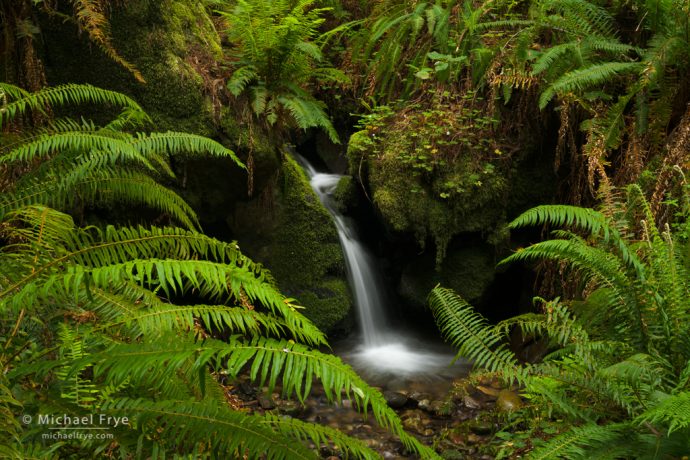
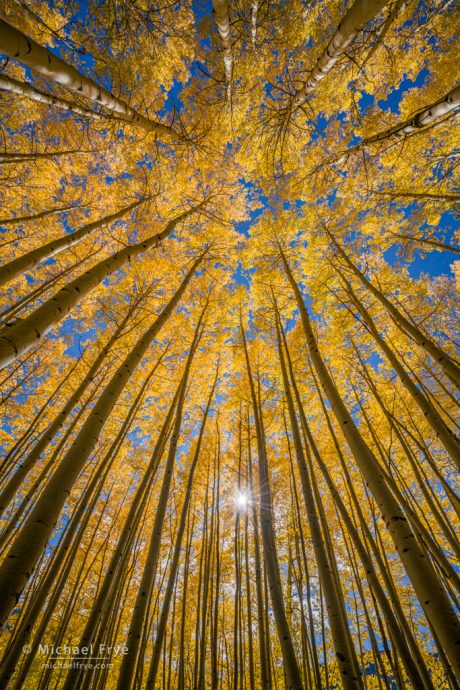








Lol at “well perhaps not so calmly”.
I really like how the sun on the forest floor leads to the backlit tree as well.
Definitely a “stop the car, now” type shot. It tells a great story. It would have been fun to see the earlier shot when the tree was shaded just for comparison to see how much difference the backlighting made. Although it’s pretty obvious that it would.
Thanks for the thoughtful article as always.
Thanks Doug! I like that light on the forest floor too – I think it actually adds a lot. The earlier photo was a different composition from a different camera position, so I don’t know that the comparison would be all that illuminating.
Love the shot of that maple. I think one of the most beautiful Fall shots are backlit trees. Amazing to me how the sun cooperated to illuminate only this tree. I’ve missed too many such shots because the sun only cooperates for a few minutes or seconds and I didn’t move quickly enough.
Thanks for sharing the moment with us.
Thanks Roland! I’ve been barely too late for photos like this too. In fall and winter in Yosemite Valley the sun slides behind cliffs along the south side of the valley, keeping some areas in the shade all day, while others might be in the shade, then get sunlight when the sun hits a low point on the valley rim, then go into shade again. That’s what happened here, and I managed to catch it just before the tree went back into the shade. You can see that the leaves on the right edge of the tree are actually partially in the shade already.